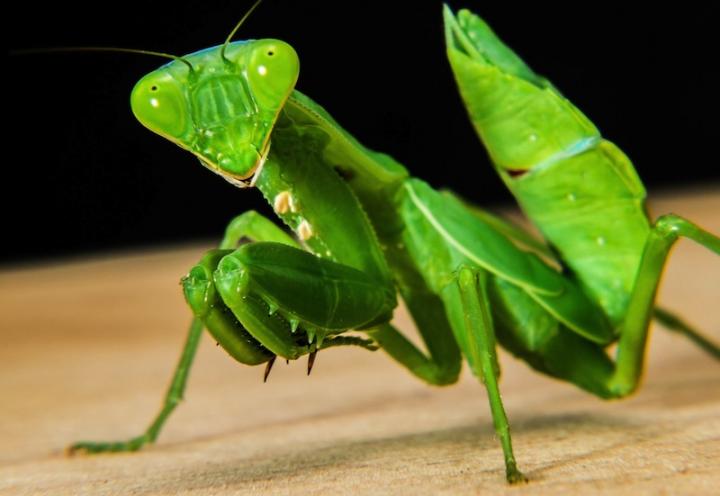
Praying Mantis are general predators that feed on aphids, beetles, caterpillars, chinch bugs, Colorado potato beetles, leafhoppers, hornworms, leafrollers, squash bugs, thrips and whiteflies. They feed on what they can catch! They start off feeding on fruit flies and other tiny insects and as they grow so does their prey as often full grown adult grasshoppers are eaten. Adults are large (up to 10cm/4in.) green or brownish in color with papery wings. They are the 'guardians' of the garden,. and act stealthily and 'stalk' harmful insects in order to protect your veggies and flowers. In nature, it is sometimes hard to find these insects , but wouldn't it be fun to hatch your own and introduce them to your garden?
The praying mantis has a rather simple life cycle and like all insects, in order to understand how their effectiveness, one must understand the stages they must go through in order to become the voracious predators they are.
Praying mantis eggs are laid as frothy cases that quickly harden and can contain from 50 to 400 eggs. These cases are attached to low lying shrubs and weeds and like most insects, a small numbr of eggs are actually hatched.
Baby mantis are hatched as nymphs and are very small less than 0.5 cm in size. As they dry their arms and legs unravel and once they are able to sit they finish drying and quickly disperse before they become 'food' for their brothers and sisters! An immature mantis looks just like an adult, except much smaller.
Both female and male mantis can fly, although the males are much better flyers. Adult mantis mate in late summer and often the smaller males become food for the females after mating so as to serve as food for the developing eggs - talk about a merciless tribe! Females can lay 1-4 egg cases before winter and the mantis overwinter as these egg cases.
Praying mantis are sent to you as an egg case. Egg cases will not hatch until about mid June when the weather is hot enough and the daylight hours are longer. All will hatch within about 1 hour - they will quickly disperse as they are very cannibalistic and the egg case remains unchanged. Each mantis will set up its own territory where it will live for the summer. They are very difficult to find in the garden because they are well camouflaged. Later in the summer they will fly to find a mate and this is often when they are seen. Also as the weather cools they will sit out in the sun to warm themselves.
To witness an egg case hatching, hatch it inside and then release your mantis into your garden.
You can purchase mantis egg cases in spring and watch them hatch using a hatching chamber, a wonderful educational experience especially for the children who are learning remotely this spring. Each praying mantis hatching chamber is $29.99 with the egg case included. You can find them under supplies in our online store.


